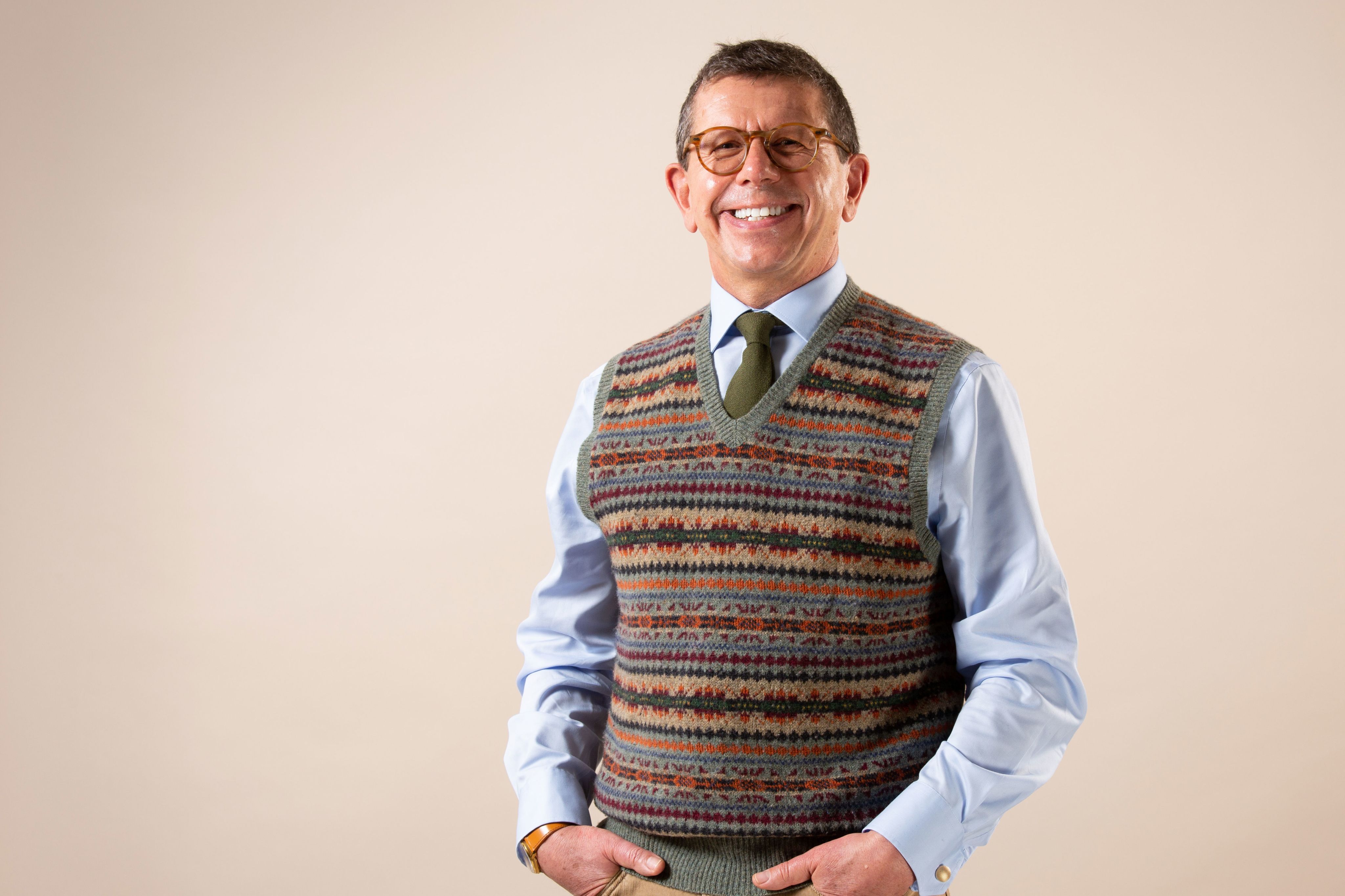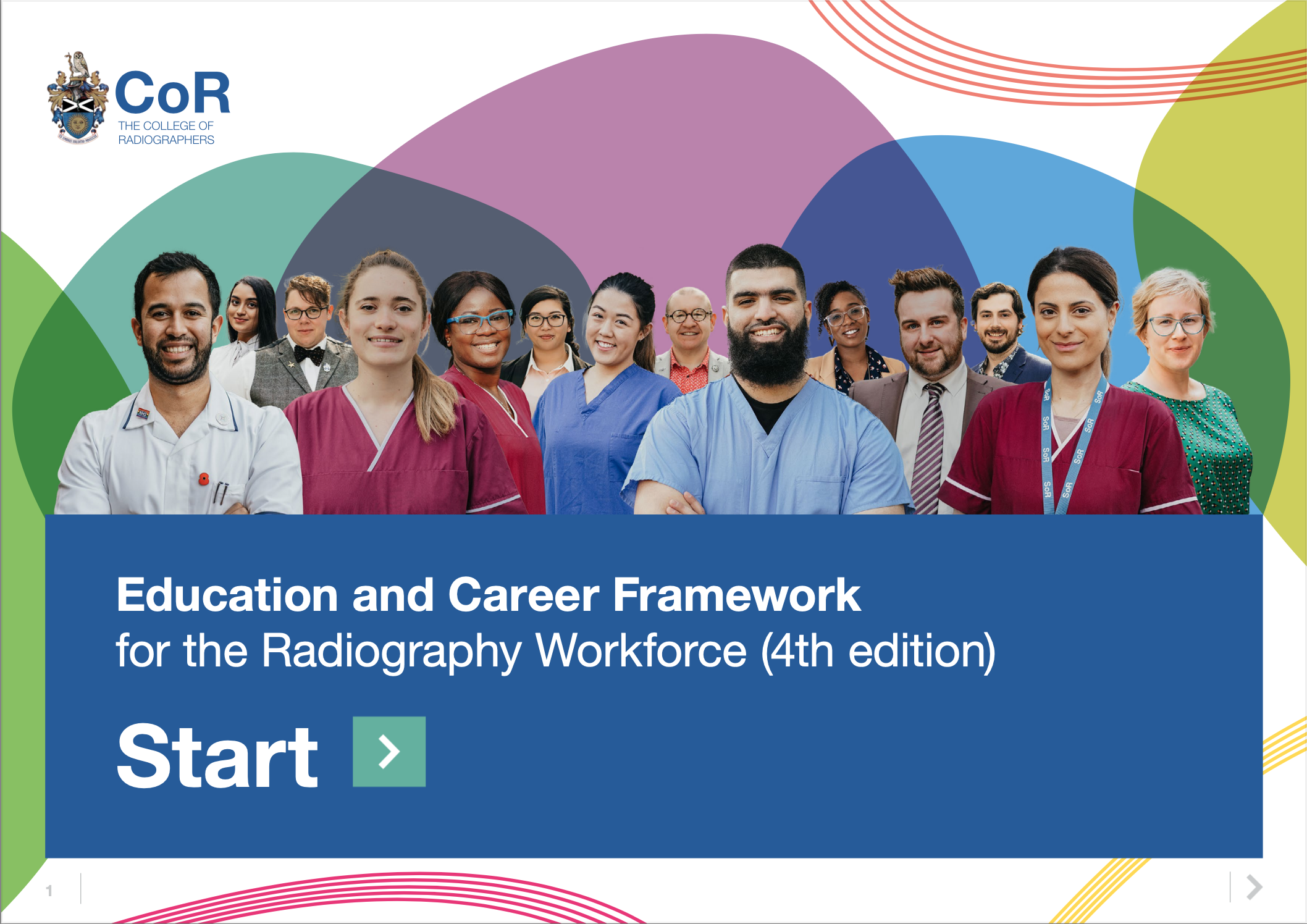Profile: Marcus Jackson
Meet the
new Chair

Dr Marcus Jackson is the new Chair of the College of Radiographers Board of Trustees and is keen to explain its mission.
Like many radiographers, Marcus Jackson became a diagnostic radiographer mainly because he wanted to be involved in patient care but also because of the physics. “I’ve always been interested in how things work,” he says.
When Marcus took up his student place at Middlesex Hospital, west London, in 1983, little did he suspect that, 40 years later, he would be the Chair of the College’s Board of Trustees, as well as an associate professor and professional lead for diagnostic radiography at St George’s, University of London.
Why did you become a radiographer?
At that time, training would take place in a school of radiography attached to a hospital, with the theory taught in the morning and the afternoon spent in practice. It was not until the 1990s that radiography became a degree profession and transferred to universities.
Marcus moved with the times and, having been appointed superintendent radiographer at the National Hospital for Neurology and Neurosurgery in 1997, two years later he secured a lecturing post at London South Bank University.
So what made Marcus take that first step into education and academia? “I was working in clinical practice and my interest was MRI and CT imaging. At that stage in my career, the next step up would have been more of a management role and I wasn’t really sure that I wanted to do that,” he explains.
“I saw a lecturer’s post advertised at South Bank and the head of that department was a well-known name in radiography – Mary Lovegrove – who had also been my teacher when I was training. So I had an informal chat with Mary and decided that it was what I wanted to do.”
He progressed through the world of academia to become head of the department of radiography and associate dean at St George’s in 2015, a role that came with the brief for student experience.
“It sounds enormous and it is enormous,” he says. “The focus is really on student engagement and improving as best we can the student experience. A big part is looking at student feedback and trying to garner meaning from it and creating action plans. We aim to create a sense of belonging and to give them a more rounded experience.”
Years earlier, it had been his own experience as a student and qualifying as a radiographer that gave Marcus his first contact with the College of Radiographers, which, ultimately, led him to volunteer as a member of the Board of Trustees and, last year, to stand for the post of Chair.
Why did you volunteer as a trustee for the College of Radiographers?
Marcus applied to join the board as an education specialist, having already served on the Approval and Accreditation Board (AAB), which is responsible for ensuring patient safety and the quality of educational provision. This includes approving and reapproving radiography qualifications, and also accrediting practitioners at the four levels of assistant practitioner, practitioner, advanced practitioner and consultant practitioner. “In addition to the AAB, my input would be to help inform policy and guidance documents for both academic learning and practice learning,” he says.

The College has recently published its Education and Career Framework, which is used by universities to develop the radiography curriculum and also helps radiographers to progress their careers from one of the four tiers to the next.
“It’s a marvellous piece of work,” says Marcus. “This new interactive version is so much more accessible and informative than previous editions and it’s very much evidence based. It’s very relevant to the experience of those involved in education and, importantly, it’s also informed by the patient voice.”
So is it a good time to be a radiographer?
Ensuring that the voice of patients is heard is a key element of the College’s role in radiography: “One of the objectives of the College is making sure that the patient voice is central to the work we do, and to our research, and the work we do with colleges from other disciplines.
“To that end, we have a patient advisory group, and its remit is to bring together service users to inform everything we do in the College, in our policymaking, strategy, and in taking forward our objectives.”
How is the role of the College different to that of the Society of Radiographers?
One of the current aims of the College is to develop and strengthen its identity, says Marcus. A key message is that while the College and Society are connected, they have very distinct purposes, both of which are highly relevant to the profession.
“The College is relevant to every radiographer because of its work around education and developing CPD, which ensures that radiography practitioners are up to date and using an evidence base in their daily practice, and also because of the research it supports and promotes,” he says.
“Radiography draws on knowledge from multiple disciplines but the practice of radiography, which brings all of this knowledge together, also needs to be informed by an evidence base.”
Marcus is keen to emphasise that any radiographer can undertake research. “You do not need to be an academic and we need more clinical practitioners to be involved in research. The College provides support to encourage new researchers to take that first step. The problem is that research can be surrounded in mystery and the idea that only a select few can take part.”
Participation is central to the College’s Research Strategy 2021-26, and its three key aims:
- To embed research at all levels of radiography practice and education.
- To raise the impact and profile of radiography through high-quality research, focused on improving patient care and service delivery.
- To expand UK radiography research capacity through the development of skilled and motivated research-active professionals.
“You can make quality improvement changes at every level through very simple research practices that do not cost a lot of time and can make a big difference,” says Marcus. “So it does not have to be at a national level to have a real impact on the patient experience.”
What are the future priorities of the College?
The College makes research possible by providing support, funding and promotion to radiographers. Its innovative industry partnership scheme (CoRIPS) brings together companies with an interest in radiography to fund bids of up to £5,000 for small projects and up to £10,000 for one larger project each year. The aim is to support at least one grant for an applicant who has little or no previous experience of undertaking research and development projects.
Marcus says: “The real barrier for any practitioner conducting research is time so, by providing funding, we are giving a space for that research to happen.”
Every three years, the Board of Trustees agrees a detailed strategy to further the College’s work around the promotion and development of medical imaging and radiotherapy, the promotion of study and research into radiography, and the promotion of public awareness of the profession.
The College also produces an Impact Report to demonstrate the outcomes of its endeavours and the value of its work. “There’s little point engaging in all of these activities if you cannot share all of these wonderful things that are happening and, as a registered charity, we need to provide evidence that our work is having an impact,” says Marcus.
The latest edition of the report was created in a digital format to improve accessibility. “It brings all the workstreams and activities together in one place but is not just a descriptive report,” says Marcus. “Moving it online allowed it to be more interactive and meant it could be updated regularly, so it’s actually a living document.
“It’s a celebration of our work, bringing everything together and giving it more meaning, helping us to prove the benefits of what we do to both patients and practitioners.”
Images: Julian Dodd

